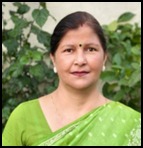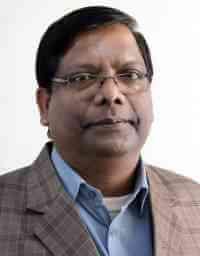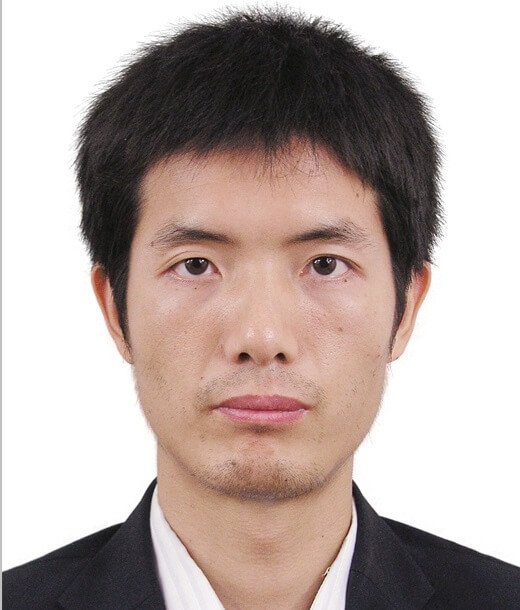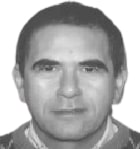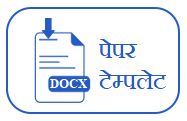Synthesized effect of Land Surface Modification and Net Radiation on the Urban Climate: A study of Lagos metropolis (Nigeria) between 1984 and 2013

DOI:
https://doi.org/10.54060/jase.v2i2.19Keywords:
Land surface temperature (LST), Urban area, Urban heat island (UHI), Lagos metropolisAbstract
Land use change are human modifications induced by urbanization which promotes variations in the energy and radiation balance, which in-turn has made the tem-perature of urban areas higher compared to the surrounding rural areas in-turn this has produced urban heat island (UHI).This urban phenomenon is becoming more dis-tinct and unique in urban areas in Lagos metropolis. Geographical Information System (GIS) and statistical techniques were adopted to synthesize the effect of land surface modifications and net radiation on the urban climate of Lagos metropolis between 1984 and 2013. The following factors such as the urban area, Land Surface Tempera-ture (LST), Net Radiation, and Normalized Difference Vegetation Index (NDVI) was de-rived from Landsat imagery. In Lagos metropolis, increase in the urban-rural landscape difference has led to a decreased in the urban vegetation which has increased net radi-ation and LST between 1984 and 2013. The effect of the above factors was analyzed to product an urban climate determinant driven by: (1.) the effect of the urban area and (2.) land surface temperature of Lagos metropolis. Based on the above, GIS techniques was employed to map UHI areas for Lagos metropolis by delineating the urban built-up area from the rural built-up area with reference to its LST mean. Furthermore, UHI areas are on the increase as well as its spatial extent. This triggered UHI effect in cities of Lagos metropolis between 1984 and 2013. Based on research findings, possible mitigation measures as means of controlling the menace of UHI were highlighted for Lagos metropolis.
Downloads
References
G.J. Steeneveld, S. Koopmans, B.G. Heusinkveld, and N.E. Theeuwes,“Refreshing the role of open water surfaces on mitigating the maximum Urban Heat Island effect,” Lands. Urban Plan., vol. 121, pp. 92–96, Jan. 2014.
M.F. Shahidan, M.K.M. Shariff, P. Jones, E. Salleh, and A.M. Abdullah,“ A comparison of Mesua ferrea L. and Hura crepitans L. for creation and radiation modification in improving thermal Comfort,” Lands. Urban Plan. vol. 97, issu. 3, pp. 168–181, Sept. 2010.
N. Kalthoff, M. Fiebig-Wittmaack, C. Meißner, M. kohler, M. Uriate, I. Bischoff-Gauß, and E. Gonzales,“ The energy balance, evapo-transpiration and nocturnal dew deposition of an Arid valley in the Andes,” J. Arid Environ., vol. 65, issu. 3, pp. 420-443, May, 2006.
A.G. Ferreira, E.S. Olivas, J.G. Sanchis, A.J. Serrano-López, A. Velàzquez-Blazquez, and E. López-Baeza,“ Modelling net radiation at surface using “in situ” net radiometer measurements with artificial neural networks,” Expert Syst. Appl., vol. 38, issu. 11, pp. 14190–14195, Oct. 2011.
H-Y. Kim, and S. Liang,“Development of a hybrid method for estimating land surface shortwave net radiation from MODIS data,” Rem. Sens. Environ., vol. 114, issu. 11, pp. 2393–2402, Nov. 2010.
A. Kessler, and L. Jaeger,“Long-term changes in net radiation and its components above a pine forest and a grass surface in Germany,” Int. J. Climatol., vol. 19, issu. 2, pp. 211-226, Feb. 1999.
J.M. Blonquist Jr., B.D. Tanner, and B. Bugbee,“Evaluation of measurement accuracy and comparison of two new and three traditional net radiometers,” Agr. For. Meteorol., vol. 149, issu. 10, pp. 1709–1721, Oct. 2009.
D.R. Cobos, and J.M. Baker,“Evaluation and modification of a domeless net radiometer,” Agron. J., vol. 95, issu. 1, pp. 177–183, Jan. 2003.
A.J. Arnfield,“Two decades of Urban Climate research: A review of turbulence, exchanges of Energy and Water,and the Urban Heat Island,” Int. J. Climatol., vol.23, issu. 1, pp. 1-26, Jan. 2003.
X. Wang, and Y. Gong,“ The impact of an urban dry island on the summer heat wave and sultry weather in Beijing city,” Chinese Sci. Bull., vol. 55, pp. 1657-1661, Jun. 2010.
Y.P. Cui, J.Y. Liu, Y.F. Hu, J.B. Wang, and W.H. Kuang,“Modeling the radiation balance of different urban underlying surfaces,”Chinese Sci. Bull., vol. 57, no. 9, pp. 1046-1054, Jan. 2012.
R.G. Cueto, N.S. Soto, Z.H. Rincón, and S.O. Benítez,“Parameterization of net radiation in an arid city of Northwestern Mexico,” Atmós., Vol. 28, issu. 2, pp. 71-82, Apr. 2015.
S. Wypych, and A. Bokwa, “What controls the urban climate?,” Climate of cities basics, 2003. [Online]. Avaiable: https://open.uj.edu.pl/mod/page/view.php?categoryid=1311 [Accessed: Oct. 2, 2022].
L. Järvi, C.S.B. Grimmond, and A. Christen,“The Surface Urban Energy and Water Balance Scheme (SUEWS): Evaluation in Los Angeles and Vancouver,” J. Hydrol., vol. 411, issu. 3-4, pp.219–237, Dec. 2011.
G.L. Feyisa, K. Dons, and H. Meilby,“Efficiency of parks in mitigating Urban Heat Island effect: An example from Addis Ababa,” Lands. Urban Plan., vol. 123, pp. 87–95, Mar. 2014.
D.H. Wrenn, and A.G. Sam,“Geographically and temporally weighted likelihood regression: Exploring the spatiotemporal determinants of Land use change,” Reg. Sci. Urban. Econ., vol. 44, pp. 60–74, Jan. 2014.
C.W. Mackey, X. Lee, and R.B. Smith,“Remotely sensing the cooling effects of city scale efforts to reduce Urban Heat Island,” Build. Environ., vol. 49, pp.348–358, Mar. 2012.
Y-F. Su, G.M. Foody, and K-S. Cheng, “Spatial non-stationarity in then relationships between land cover and surface temperature in an Urban Heat Island and its impacts on thermally sensitive populations,” Lands. Urban Plan. vol. 107, issu.2, pp. 172–180, Aug. 2012.
N. Zhang, X. Wang, and Z. Peng,“Large-eddy simulation of mesoscale circulations forced by in homogeneous Urban Heat Island,” Bound.-Layer Meteorol., vol. 151, issu. 1, pp. 179–194, Apr. 2014.
H. Radhi, F. Fikry, and S. Sharples,“Impacts of urbanization on the thermal behaviour of new built up environments: A scoping study of the Urban Heat Island in Bahrain,” Lands. Urban Plan., vol. 113, pp. 47–61, May 2013.
D. Groleau, and P.G. Mestayer,“Urban morphology influence on urban albedo: A revisit with the SOLENE model,”Bound.-Layer Meteorol., vol. 147, pp. 301–327, May 2013.
J.E. Nichol,“High-resolution Surface Temperature patterns related to urban morphology in a Tropical city: Satellite-based study,” J. Appl. Meteorol., vol. 35, issu. 1, pp. 135–146, Jan. 1996.
I.D. Stewart,“A systematic review and scientific critique of methodology in modern Urban Heat Island literature,” Int. J. Climatol., vol. 31, issu. 2, pp. 200-217, Jan. 2011.
T.R. Oke, Boundary Layer Climates. 2nd ed. London, U.K. and New York, NY, USA: Routledge, pp. 1-464,1987.
L.B. Stabler, C.A. Martin, and A.J. Brazel,“Microclimates in a desert city were related to land use and vegetation index,”Urban For. Urb. Green., vol. 3, issu. 3-4, pp. 137-147, Jun. 2005.
H.E. Landsberg,“The Urban Climate,” Int. Geophys. Ser., 28, New York, NY, USA: Academic Press, pp. 1-275, 1981.
U.S. Environmental Protection Agency, “Urban Heat Island basics,” Reducing Urban Heat Islands: Compendium of strategies, 2008. [Online]. Available: https://www.epa.gov/heat-islands/ heat-island-compendium [Accessed: Oct. 2, 2022].
M. Ogunleye, and T. Awomosu,“Lagos as a Region,” in State of the environment report-Lagos, M. Ogunleye, and B. Alo, Eds. Lagos, Nigeria: Ministry of the Environment, Beach land Resources and Tomps Prints Production, 2010.
T.V. Ramachandra, U. Kumar, and H.A. Bharath,“Ecological approach for mitigation of urban Flood risks,” in Ecosystem approach to Disaster risk reduction, A.K. Gupat, and S.S. Nair, Eds. New Delhi, India: National Institute of Disaster Management (NIDM), 2012, pp. 103-119.
W.C. Snyder, Z. Wan, Y. Zhang, and Y.-Z. Feng,“Classification based Emissivity for Land Surface Temperature measurement from space,” Int. J. Rem. Sens., vol. 19, issu. 14, pp. 2753-2774, 1998.
M. Stathopoplou, C. Cartalis, and M. Petrakis, “Integrating CORINE Land cover data and Landsat TM for Surface Emissivity definitions: An application for the urban area of Athens, Greece,” Int. J. Rem. Sens., vol. 28, issu. 15, pp. 2367–2393, Jul. 2007.
L. Tursilowati, J.T.S. Sumantyo, H. Kuze, and E.S. Adiningsih,“Remote sensing technology for estimation of Surface Energy Balance components relate with Land use and Land cover in Semarang-Indonesia,” Res. J. Engineer. Appl. Sci., vol. 1, no. 5, pp. 291-298, Jan. 2012.
E. Parlow, Determination and inter comparison of radiation fluxes and net radiation using Landsat TM data of Liefderjorden/NW-Spitsbergen, in Proc. of the 4th Circumpolar Sympo., Lyngby, Denmark, Apr. 29- May 1, 1996, pp. 27-32
J.I. Monteith, and M.H. Unsworth, Principles of Environmental Physics, 3rd ed. USA: Academic Press, pp.395-401,2008.
W.C. Swinbank, “Long-wave radiation from Clear Skies,” Quart. J. Roy. Meteorol. Soc., vol. 89, issu. 381, pp. 339-348, Jul. 1963.
Q. Weng,“A remote sensing-GIS evaluation of Urban expansion and its impact on Surface Temperature in the Zhujiang Delta, China,” Int. J. Rem. Sens., vol. 22, issu. 10, pp. 1999–2014, Jun. 2001.
J.W. Rouse Jr., R. Haas, J. Schell, and D. Deering, “Monitoring vegetation systems in the Great plains with Erts,” in 3rd Earth Res.Technol. Satell. Symp., Greenbelt, WA, USA, December 10-14, 1973, pp. 301-317.
S.W. Myint, B. Zheng, E. Talen, C. Fan, S. Kaplan, A. Middel, M. Smith, H-P. Huang, and A. Brazel, “Does the spatial arrangement of urban landscape matter? Examples of urban warming and cooling in Phoenix and Las Vegas,” Ecosyst. Health Sust. vol. 1, no. 4, pp. 1–15, Jun. 2015.
Q. Weng, H. Liu, and D. Lu, “Assessing the effect of Land Use and Land Cover patterns on thermal conditions using landscape metrics in city of Indianapolis, United State,” Urban Ecosyst., vol. 10, pp. 203-219, Mar. 2007.
P.S. Wichansky, L.T. Steyaert, R.L. Walko, and C.P. Weaver, “Evaluating the effects of historical Land cover change on summertime weather and climate in New Jersey: Land cover and Surface Energy Budget changes,” J. Geophys. Res.: Atmos., vol. 113, issu. D10, May 2008.
Y. Cui, X. Xu, J. Dong, and Y. Qin, “Influence of urbanization factors on Surface Urban Heat Island Intensity: A comparison of countries at different developmental phases,” Sustain., vol. 8, issu. 8, Jul. 2016.
W.D. Solecki, C. Rosenzweig, L. Parshall, G. Pope, M. Clark, J. Cox, and M. Wiencke, “Mitigation of the Heat Island effect in urban New Jersey,” Glob. Environ. Chan. Part B: En¬viron. Haz., vol. 6, issu. 1, pp. 39-49, Jul. 2005.
S. Ma, A. Pitman, M. Hart, J.P. Evans, N. Haghdadi, and I. MacGill, “The impact of an urban canopy and anthropogenic heat fluxes on Sydney‘s climate,” Int. J. Climatol., vol. 37, issu. S1, pp. 255-270, Feb. 2017.
A.J. Brazel, and D. Quatrocchi, “Urban Climatology,” in Encyc. World Climatol., J.E. Oliver, Ed. Dordrecht, Netherlands: Springer, 2005, pp. 766–779.
H. Kamal, M. Aljeri, A. Abdelhadi, M. Thoma, and A. Dashti,” Environmental assessment of Land Surface Temperature using Remote Sensing technology,” J. Environ. Res., Eng. and Manage., vol. 78, no. 3, pp. 22–38, Oct. 2022.
J. Bernard, M. Musy, I. Calmet, E. Bocher, and P. keravec,“ Urban Heat Island temporal and spatial variations: Empirical modeling from geographical and meteorological data,” Build. Environ., vol. 125, pp. 423–438, Nov. 2017.
D. Arg¨ueso, J.P. Evans, A.J. Pitman, and A.D. Luca, “Effects of city expansion on heat stress under climate change conditions,” PLoS One, vol. 10, No. 2, Feb. 2015.
I.R. Hegazy, and M.R. Kaloop, “Monitoring urban growth and land use change detection with GIS and remote sensing techniques in Daqahlia Governorate Egypt,” Int. J. Sustain. Built Environ.,vol. 4, issu. 1, pp. 117–124, Jun. 2015.
U. Ibeabuchi, and F. Oni, “An assessment of Urban Heat Islands within Abeokuta area, South-western Nigeria,” Lagos J. Geo. Issu., vol. 1, issu. 1, pp. 25-42, 2013.
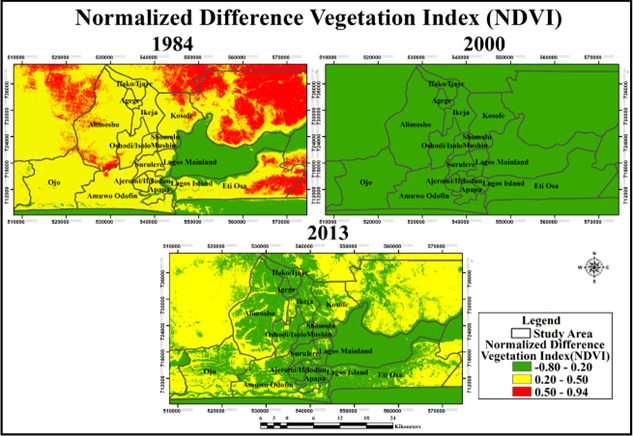
Downloads
Published
How to Cite
CITATION COUNT
Issue
Section
License
Copyright (c) 2022 Uwadiegwu Ibeabuclhi, Feyi Oni, Olusegun A. Adeaga

This work is licensed under a Creative Commons Attribution 4.0 International License.







